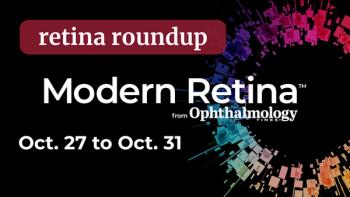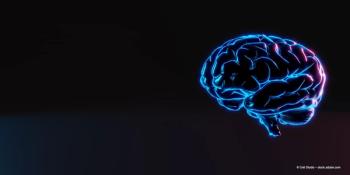
Study examines use of AI for early detection of pediatric eye diseases using mobile photos
Researchers from the Shanghai Jiao Tong University School of Medicine developed a deep learning–based model for early identification of myopia, strabismus, and ptosis using 1419 facial photographs from 476 individuals.
A team of researchers led by Shanghai Jiao Tong University School of Medicine set out to demonstrate that a combination of artificial intelligence (AI) and smartphone photography can be used to diagnose common childhood eye conditions.
The lead investigators include Qin Shu, MD, Jiali Pang, MS, and Zijia Liu, PhD.
In this cross-sectional study, a deep learning–based model was developed for early identification of myopia, strabismus, and ptosis using 1419 facial photographs from 476 individuals. According to the study, the AI model showed high accuracy in detecting all of these pediatric eye diseases.1
According to the study, research was conducted from October 1, 2022, to September 30, 2023, to enroll participants at the Ophthalmology Department of Shanghai Ninth People’s Hospital, School of Medicine, Shanghai Jiao Tong University.1
The study included participants who were no more than 18 years of age, had been diagnosed with myopia, strabismus, or ptosis after an ophthalmologic examination at our hospital, had complete medical records and examination data, were able to cooperate during facial image acquisition to obtain clear images, and had provided informed consent from both themselves and their guardians.
The researchers noted that those with ocular conditions affecting image capture, severe facial abnormalities, history of strabismus or ptosis reconstructive surgery, and psychological or psychiatric issues were excluded.
During the study, participants’ faces were photographed in the clinic room under lighting conditions of 300 to 500 lux. The images were taken using a smartphone from a distance of 1.64 inches from the patient. The patient was instructed to remove their spectacles, maintain their head upright, and stare straight ahead.1
The researchers developed a deep learning–based model was developed to identify myopia, strabismus, and ptosis. The performance of the model was assessed using sensitivity, specificity, accuracy, the area under the curve (AUC), positive predictive values (PPV), negative predictive values (NPV), positive likelihood ratios (P-LR), negative likelihood ratios (N-LR), and the F1-score. GradCAM++ was utilized to visually and analytically assess the impact of each region on the model. A sex subgroup analysis and an age subgroup analysis were performed to validate the model’s generalizability.
Results
A total of 1419 images obtained from 476 patients (225 female [47.27%]; 299 [62.82%] aged between 6 and 12 years) were used to build the model. Among them, 946 monocular images were used to identify myopia and ptosis, and 473 binocular images were used to identify strabismus.
According to the study, the model demonstrated good sensitivity in detecting myopia (0.84 [95% CI, 0.82-0.87]), strabismus (0.73 [95% CI, 0.70-0.77]), and ptosis (0.85 [95% CI, 0.82-0.87]). The model showed comparable performance in identifying eye disorders in both female and male children during sex subgroup analysis. There were differences in identifying eye disorders among different age subgroups.
“The model’s performance for these 3 diseases was constant across sex subgroups; however, changes were noted in age subgroups, showing increasing sensitivity for myopia and strabismus with age,” the researchers wrote. “These results suggest that AI prediction models utilizing smartphone photographs may identify eye diseases in children and adolescents, providing a handy and early diagnostic tool for families to use at home.”
The researchers acknowledged there are limitations of the study.
“First, this is a single-center cross-sectional study with a small sample size, suggesting the need for a multicenter investigation to enhance the algorithm’s generalizability,” they wrote. “When taking photographs, only 1 snapshot is gathered for each individual in this investigation, which restricts the algorithm’s capabilities due to insufficient information.”
Moreover, the researchers pointed out that collecting patients’ images from various perspectives can enhance the algorithm’s performance. In addition, the sample sizes of the 3 different diseases in this study were different, with myopia having the largest sample size and strabismus having the smallest sample size, which may be one of the potential reasons for the model’s low sensitivity in strabismus detection.
“Increasing the number of facial photographs of strabismus patients could help the model improve its performance in strabismus detection,” they wrote. “The existing model is a binary classification model, although the severity of myopia, strabismus, and ptosis differs among patients. In the future, we aim to develop a model capable of assessing the severity of myopia, strabismus, and ptosis.”
The researchers noted the study demonstrated their detection model using AI showed strong performance in accurately identifying myopia, strabismus, and ptosis using only smartphone images.
“These results suggest that it can assist families in screening children for myopia, strabismus, and ptosis, facilitating early identification and reducing the risk of visual function loss and severe problems due to delayed screening,” they concluded. “Moreover, using such information can help achieve a more equitable allocation of limited medical resources. This is critical to the advancement of global health standards.”
Separate studies focus on AI
A study of children and youth with diabetes conducted by the Johns Hopkins Children’s Center has found that autonomous artificial intelligence (AI) diabetic eye exams increase completion rates of screenings designed to prevent potentially blinding diabetes eye diseases (DED).
During the exam, pictures are taken of the backs of the eyes without the need to dilate them, and AI is used to provide an immediate result.
According to a news release,2 the research study noted the AI-driven technology used in the exams may close “care gaps” among racial and ethnic minority youth with diabetes, populations with historically higher rates of DED and less access to or adherence with regular screening for eye damage.
In a report on the study published recently in Nature Communications,3 researchers reviewed diabetic eye exam completion rates in people under age 21 with type 1 and type 2 diabetes, and found that 100% of patients who underwent AI exams completed the eye assessment.
Moreover, recent studies by Risa Wolf, MD, a pediatric endocrinologist at Johns Hopkins Children’s Center, and her colleagues have uncovered autonomous AI screening that uses cameras produce results that enable accurate DED diagnosis.
The research team found 25 out of 81 participants, or 31%, in the autonomous AI group had a result indicating that DED was present.
“With AI technology, more people can get screened, which could then help identify more people who need follow-up evaluation,” Wolf noted in the release. “If we can offer this more conveniently at the point of care with their diabetes doctor, then we can also potentially improve health equity, and prevent the progression of diabetic eye disease.”
The researchers also pointed out the autonomous AI used in their study is not approved by the US Food and Drug Administration for those under 21 years old. The note a potential source of bias in the study was that some of the participants were familiar with autonomous AI diabetic eye exams from a prior study, and therefore may have been more willing to participate in the new one.
References:
Shu Q, Pang J, Liu Z, et al. Artificial Intelligence for Early Detection of Pediatric Eye Diseases Using Mobile Photos. JAMA Netw Open. 2024;7(8):e2425124. doi:10.1001/jamanetworkopen.2024.25124
Study Finds AI–Driven Eye Exams Increase Screening Rates for Youth with Diabetes. www.hopkinsmedicine.org. https://www.hopkinsmedicine.org/news/newsroom/news-releases/2024/01/study-finds-ai-driven-eye-exams-increase-screening-rates-for-youth-with-diabetes
Wolf, R.M., Channa, R., Liu, T.Y.A. et al. Autonomous artificial intelligence increases screening and follow-up for diabetic retinopathy in youth: the ACCESS randomized control trial. Nat Commun 15, 421 (2024). https://doi.org/10.1038/s41467-023-44676-z
Newsletter
Keep your retina practice on the forefront—subscribe for expert analysis and emerging trends in retinal disease management.
















































